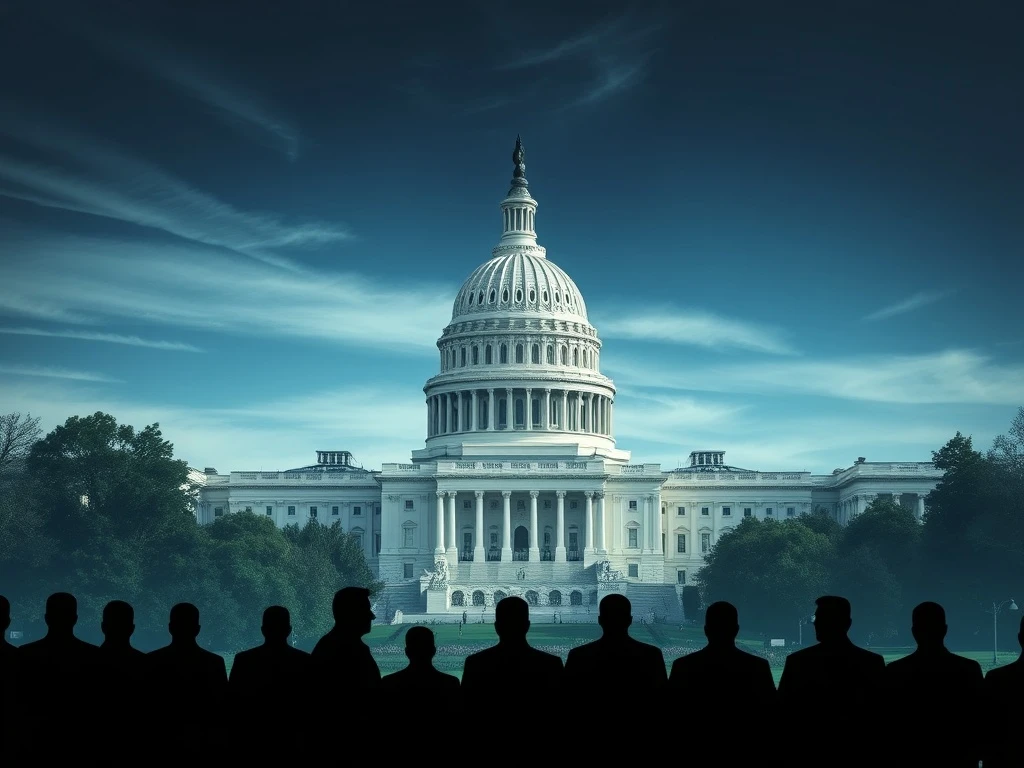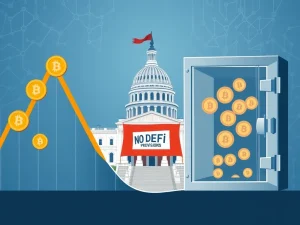Crypto Bills Achieve Historic Breakthrough in US House After Standoff

The halls of the U.S. House of Representatives recently witnessed a political drama worthy of a blockbuster, culminating in a nine-hour procedural standoff. At the heart of this unprecedented stalemate? The future of cryptocurrency in America. After a marathon session, a breakthrough was finally achieved, paving the way for crucial crypto bills to advance. This week marks a pivotal moment for digital assets, as lawmakers grapple with establishing clear guidelines for an evolving financial frontier.
What Are These Pivotal Crypto Bills?
The recent legislative push in the US House brings three significant crypto bills to the forefront, each aiming to bring more clarity and structure to the digital asset landscape. These bills represent a concerted effort to move beyond a regulatory vacuum and establish a framework for innovation and consumer protection.
- The CLARITY Act: This bill focuses on defining the market structure for digital assets. Its goal is to provide a clear understanding of how different cryptocurrencies should be classified and regulated, offering much-needed guidance for businesses and investors alike. Without such clarity, the industry faces uncertainty, hindering growth and adoption.
- The Anti-CBDC Surveillance Act: As its name suggests, this bill aims to prevent the creation of a central bank digital currency (CBDC) in the United States. Proponents of this bill express concerns about privacy, government overreach, and the potential for a CBDC to become a tool for surveillance. Its advancement signals a strong pushback against a digital dollar that could fundamentally alter the financial privacy of citizens.
- The GENIUS Act: This legislation is specifically designed to regulate stablecoins. Stablecoins, which are cryptocurrencies pegged to stable assets like the US dollar, play a crucial role in the crypto ecosystem. Proper regulation could enhance their stability, reduce risks for users, and foster broader adoption by ensuring their reliability and transparency.
The collective movement of these crypto bills indicates a growing recognition within Congress of the need to address digital assets comprehensively.
The US House Standoff: A Battle for Crypto’s Future
The passage of these crypto bills was not without significant political maneuvering. A procedural vote, typically a routine matter, stretched for over nine hours, becoming the longest in the House’s history. This extraordinary delay was orchestrated by a group of Republican hardliners who refused to support the vote unless a ban on central bank digital currencies (CBDCs) was guaranteed to pass.
House Majority Leader Steve Scalise eventually cut a deal, agreeing to add the CBDC ban to a must-pass defense spending bill, the National Defense Authorization Act (NDAA). This compromise broke the stalemate, allowing the procedural vote to finally pass with a narrow margin of 217-212. The dramatic holdout underscores the intensity of the debate surrounding digital assets and the determination of some lawmakers to shape the future of finance.
This unprecedented standoff highlights the complexities of legislating in the crypto space, where technological innovation often outpaces traditional regulatory frameworks. It also demonstrates the growing influence of the crypto industry as a political force, capable of prompting such significant procedural battles.
The CBDC Ban: A Key Demand Reshaping Legislation
The demand for a robust CBDC ban was the central point of contention that led to the House stalemate. Lawmakers opposing a U.S. CBDC often cite concerns about privacy, fearing that a government-controlled digital currency could lead to increased surveillance of citizens’ financial activities. They argue that such a system could centralize power, giving the government unprecedented control over personal finances.
The agreement to attach the Anti-CBDC Surveillance Act to the National Defense Authorization Act (NDAA) is a strategic move. The NDAA is a crucial piece of legislation that typically passes every year, making it an effective vehicle for controversial provisions. This maneuver increases the likelihood of the CBDC ban becoming law, reflecting a strong sentiment among a segment of lawmakers to safeguard financial privacy and limit government involvement in digital currency issuance.
For the crypto community, the push for a CBDC ban is a significant development. It aligns with the decentralized ethos of many cryptocurrencies and represents a win for those who believe in financial freedom outside traditional government control. This legislative effort could set a precedent for how future digital currency initiatives are approached in the United States.
Navigating the Complexities of Crypto Regulation
The path to comprehensive crypto regulation in the United States has been fraught with challenges. Unlike traditional financial instruments, digital assets often defy easy categorization, leading to jurisdictional disputes between regulatory bodies like the SEC and the CFTC. This ambiguity creates an uncertain environment for businesses, stifling innovation and deterring mainstream adoption.
However, clear crypto regulation offers several compelling benefits:
- Investor Protection: Defined rules can safeguard consumers from fraudulent schemes and market manipulation.
- Market Integrity: Robust frameworks can promote fair and transparent markets, attracting institutional investment.
- Innovation & Growth: Certainty allows legitimate businesses to build and expand without fear of sudden regulatory shifts.
- Global Leadership: Establishing clear rules can position the U.S. as a leader in the global digital asset economy.
Despite these benefits, challenges persist. The rapid evolution of blockchain technology means that legislation can quickly become outdated. Furthermore, striking a balance between protecting consumers and fostering innovation remains a delicate act. The ongoing debates in Congress reflect these inherent complexities, as lawmakers strive to craft effective and forward-looking policies.
The GENIUS Act: Paving the Way for Stablecoin Stability?
Among the bills moving forward, the GENIUS Act, focusing on stablecoin regulation, holds particular significance. Stablecoins are critical bridges between traditional finance and the volatile world of cryptocurrencies, facilitating trading, lending, and payments. Their stability, however, relies on robust backing and transparent operations, areas where current regulation is often lacking.
The urgency around stablecoin regulation has been amplified by past market events and the increasing recognition of their potential systemic importance. Former President Donald Trump’s stated interest in signing a stablecoin bill before the weekend highlights the bipartisan appeal and perceived necessity of this legislation. His comments underscore a growing consensus that stablecoins need a clear legal and operational framework to thrive responsibly.
If enacted, the GENIUS Act could bring several positive changes:
- Enhanced Trust: Clear rules would boost confidence among users and institutions, knowing that stablecoins are adequately backed and audited.
- Operational Clarity: Issuers would have a defined path for compliance, fostering a more secure and predictable market.
- Mainstream Adoption: Regulated stablecoins could become more widely accepted for everyday transactions and cross-border payments.
This focus on stablecoins demonstrates a pragmatic approach to crypto regulation, targeting an area that has immediate implications for financial stability and broader economic integration.
The recent breakthrough in the US House, despite a historic stalemate, marks a significant stride forward for crypto bills. The advancement of legislation addressing market structure, CBDCs, and stablecoin regulation signals a growing commitment from U.S. lawmakers to bring clarity to the digital asset space. While the journey toward comprehensive crypto regulation remains complex, this week’s events demonstrate that progress is being made, laying the groundwork for a more defined and potentially more stable future for cryptocurrency in America.









